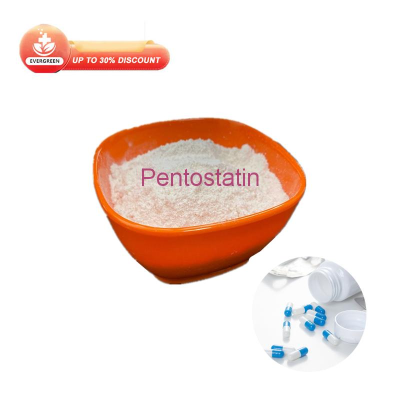-
Categories
-
Pharmaceutical Intermediates
-
Active Pharmaceutical Ingredients
-
Food Additives
- Industrial Coatings
- Agrochemicals
- Dyes and Pigments
- Surfactant
- Flavors and Fragrances
- Chemical Reagents
- Catalyst and Auxiliary
- Natural Products
- Inorganic Chemistry
-
Organic Chemistry
-
Biochemical Engineering
- Analytical Chemistry
- Cosmetic Ingredient
-
Pharmaceutical Intermediates
Promotion
ECHEMI Mall
Wholesale
Weekly Price
Exhibition
News
-
Trade Service
▎WuXi AppTec Content Team Editor When a baby born less than a year old is diagnosed with a serious life-threatening cancer, it is undoubtedly a bolt from the blue for the entire family
.
But puzzlingly, some of these children's symptoms changed miraculously: their tumors disappeared on their own without treatment
.
These children are suffering from a very dangerous and common tumor - neuroblastoma
.
It is the most common extracranial solid tumor in infants and young children, and neuroblastoma is responsible for 15% of infant cases of cancer
.
The origin of these tumors can be traced back to embryonic development and form in undifferentiated sympathetic ganglion cells
.
Therefore, neuroblastoma can occur in the adrenal glands, spine, neck, chest, and abdomen where sympathetic ganglia are present
.
The tumor can then metastasize to multiple sites in the body and develop resistance to chemotherapy
.
▲Aggressive neuroblastoma cells accumulate in tissues (Image source: Reference [2]; Credit: Frank Westermann/DKFZ) As a result, for a considerable number of children with high-risk neuroblastoma, even with intensive treatment , but it is difficult to effectively control the tumor in the long term
.
Many children are killed by cancer before they can feel the beauty of the world
.
However, among children with neuroblastoma, there is a lucky few
.
Even without any treatment, the tumors went away on their own
.
Why are the same neuroblastomas so different in different children? In a study published in Nature Cancer, scientists from institutions such as the German Cancer Research Center (DKFZ) challenged this question
.
They found that the absence of an amino acid might explain the disappearance of cancer cells in these children
.
This discovery starts with a member of the oncogene family that has recently attracted much attention, the MYCN gene
.
Recent studies have pointed out that as a regulator of disease progression, the MYCN gene determines whether precursor cells develop into mature nerve cells or into malignant neuroblastoma
.
The genome of malignant neuroblastoma carries hundreds of active copies of the MYCN gene, and its hyperactivity leads to a dramatic shift in cancer cell metabolism
.
But the question is, how exactly does this gene benefit cancer cells? If the process of MYCN gene can be stopped, can the progress of cancer also be stopped? Based on this idea, the research team studied the role of MYCN gene in neuroblastoma
.
They found that neuroblastoma cells with high MYCN activity had an exceptionally high demand for cysteine
.
For most cells, cysteine is an important building block for proteins and lipids
.
Rapidly proliferating cancer cells apparently need these proteins and lipids to make new cells
.
Cancer cells, on the other hand, also need cysteine to protect themselves from the high levels of peroxide toxins produced by a highly active metabolism
.
When neuroblastoma cells lack cysteine, they obtain it in two ways: using amino acids ingested by the host, or using methionine, which produces cysteine through another synthetic pathway
.
The dependence of neuroblastoma cells on cysteine led the research team to think that if cysteine was artificially deprived, peroxide toxins would begin to accumulate inside MYCN-driven tumor cells, leading to ferroptosis
.
Thus, cysteine may be the Achilles' heel of malignant neuroblastoma
.
Image source: 123RF In order to test this conjecture, in mouse experiments, the research team blocked the intake and synthesis pathway of cysteine, and inactivated a class of enzymes used to consume peroxides
.
At this time, due to the large accumulation of peroxides, the cancer cells can initiate a self-destruction program through ferroptosis, and the tumor shrinks
.
The study is the first to demonstrate in cancer-bearing mice that ferroptosis can be used to kill highly aggressive neuroblastoma cells
.
This same process may explain the spontaneous disappearance of cancer cells in some children with neuroblastoma
.
"During the first year of life, cells typically acquire less cysteine
.
So when these cells start dividing uncontrollably, their cysteine reservoirs are quickly emptied, so ferroptosis is set in motion.
” explained Dr.
Hamed Alborzinia, co-corresponding author of the
paper .
Some MYCN-inactive neuroblastomas cannot escape the end of self-clearing and die when the cysteine depletion reaches a certain stage .
For those high-risk patients with highly active MYCN gene, this study provides a new understanding of the balance of cysteine intake, production and consumption, and also provides more researchers with a new way to initiate the self-destruction process of cancer cells ideas .
We look forward to future clinical trials, a process that will actually be used to treat children with neuroblastoma, so that those less fortunate children can grow up healthy and feel the beauty of the world
.
Reference: [1] Alborzinia, H.
, Flórez, AF, Kreth, S.
et al.
MYCN mediates cysteine addiction and sensitizes neuroblastoma to ferroptosis.
Nat Cancer 3, 471–485 (2022).
https://doi.
org /10.
1038/s43018-022-00355-4[2] Tumors on withdrawal: Amino acid deficiency shrinks childhood tumors.
Retrieved Apr 28th, 2022 from https:// pm-22-27-Tumors-on-withdrawal-Amino-acid-deficiency-shrinks-childhood-tumors.
php







